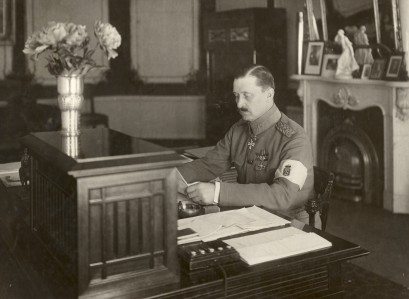

We invite visitors to see the exhibition devoted to Gustaf Mannerheim, one of the greatest Finns, military commander, Marshal, and President of Finland. The exhibition will cover topics of his biography, relations with Poland, and struggles to maintain Finnish independence during World War II.
The exhibition will be held in the Open-Air Gallery at ul. Agrykoli, from 16 to 31 October 2017, and then from 1 November to 14 December 2017 in the Open-Air Gallery at Aleje Ujazdowskie.
The role played by Gustaf Mannerheim in the history of Finland is analogous to that of Józef Piłsudski in Poland. Although the two men differed in many ways and reportedly did not like one another, they made comparable contributions to the development of their respective countries and Europe. With their admirable biographies, they embody the fight for independence, and resistance against the Bolshevik Russia.
Born on 4 June 1867, Gustaf Mannerheim only used his middle name. He spent the first twenty years of his life in Finland, which was part of the Russian Empire at the time. For the subsequent thirty years, Mannerheim served in the Tsarist Army. After his return to the homeland, which became independent on 6 December 1917, he took charge of the Finnish armed forces. The task of forcing Russian troops out of the Finnish territories quickly turned into a fratricidal war. On one side stood the White Guard, led by Mannerheim; on the other – the pro-Bolshevik Red Guard. The victory of the Whites meant that Finland defended its independence. However, this was achieved with the bloodshed of compatriots, which made the White General a controversial hero.
In late 1918, Mannerheim was appointed the Regent of Finland. At the time, his efforts were focused on international politics. His contribution to the creation of the Finnish Republic on 19 July 1919 was substantial. Soon after that, after losing the presidential election, he put his political career on hold and devoted himself to other activities, including charity work. After a dozen years, he returned to public life as the chairman of the Finland’s Defence Council. Well aware of the threat of the Soviet Union, he conceived a system of fortifications placed along the Karelian Isthmus, called the Mannerheim Line in his name.
Mannerheim united the Finnish people in the face of World War II, leading the Finnish army against the Soviet aggressor. Fending off the Red Army during the Winter War (1939-1940) was one of Mannerheim’s greatest military successes.
He was also an undisputed hero of the so-called Continuation War. Achievements from that time cemented his reputation of a national hero. The trust placed in him was reflected in his election for the President of Finland in 1944.
The figure of Mannerheim, famous European hero, is particularly close to the hearts of Poles. During his service in the Tsarist Army, he lived in Poland. Between 1911 and 1913, he led a regiment whose barracks were located in the Royal Łazienki. He maintained amicable relations with the leading representatives of the Polish aristocracy – the Lubomirski, Potocki, Tyszkiewicz and Wielopolski families. The biography of Mannerheim and the recent history of Finland have clear parallels with the history of Poland, and provide us with certain analogies concerning the experiences of the two nations.